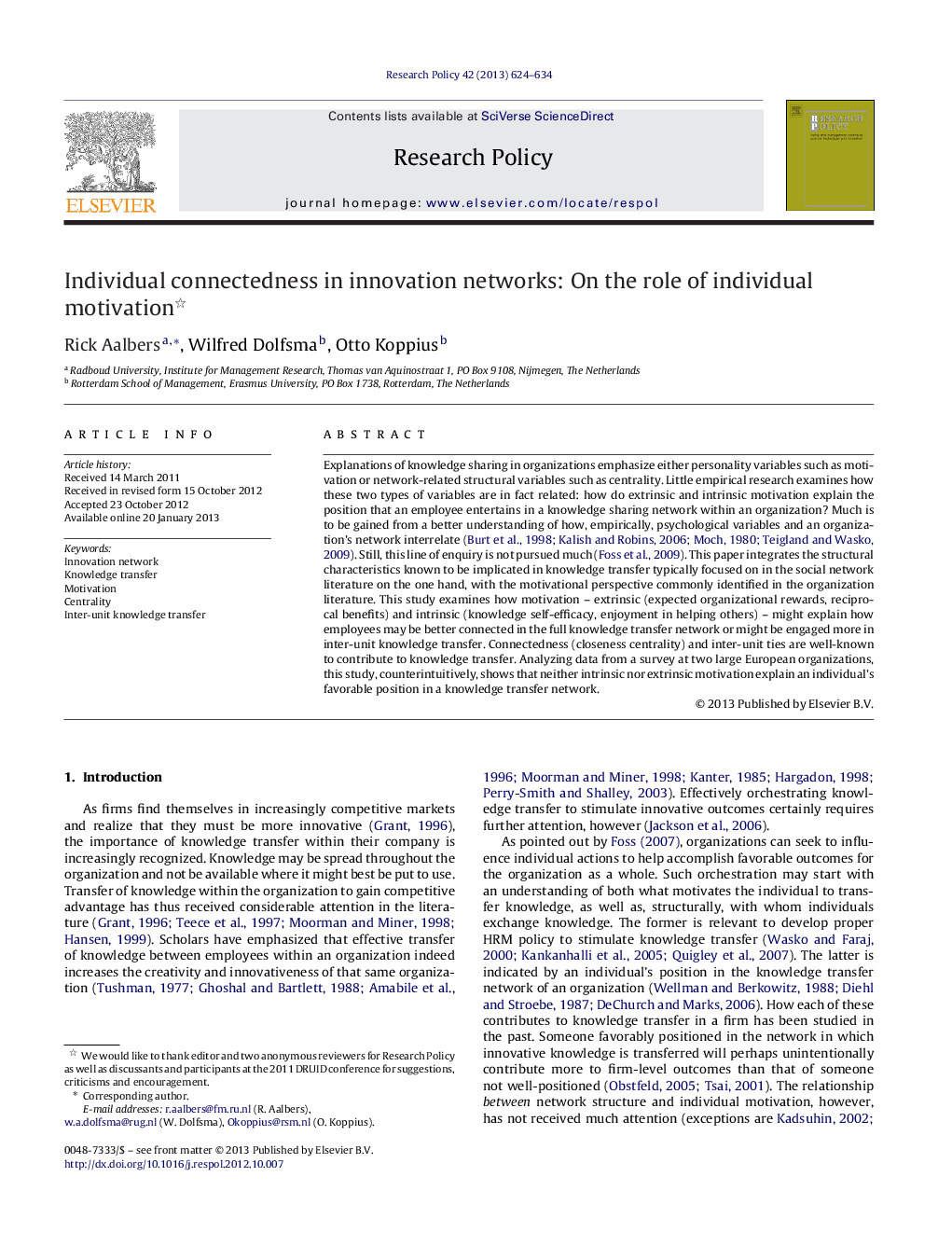| کد مقاله | کد نشریه | سال انتشار | مقاله انگلیسی | نسخه تمام متن |
|---|---|---|---|---|
| 984919 | 934387 | 2013 | 11 صفحه PDF | دانلود رایگان |

Explanations of knowledge sharing in organizations emphasize either personality variables such as motivation or network-related structural variables such as centrality. Little empirical research examines how these two types of variables are in fact related: how do extrinsic and intrinsic motivation explain the position that an employee entertains in a knowledge sharing network within an organization? Much is to be gained from a better understanding of how, empirically, psychological variables and an organization's network interrelate (Burt et al., 1998, Kalish and Robins, 2006, Moch, 1980 and Teigland and Wasko, 2009). Still, this line of enquiry is not pursued much (Foss et al., 2009). This paper integrates the structural characteristics known to be implicated in knowledge transfer typically focused on in the social network literature on the one hand, with the motivational perspective commonly identified in the organization literature. This study examines how motivation – extrinsic (expected organizational rewards, reciprocal benefits) and intrinsic (knowledge self-efficacy, enjoyment in helping others) – might explain how employees may be better connected in the full knowledge transfer network or might be engaged more in inter-unit knowledge transfer. Connectedness (closeness centrality) and inter-unit ties are well-known to contribute to knowledge transfer. Analyzing data from a survey at two large European organizations, this study, counterintuitively, shows that neither intrinsic nor extrinsic motivation explain an individual's favorable position in a knowledge transfer network.
► Number of connections (position) stimulates knowledge transfer in a firm.
► Number of connections across unit boundaries (position) stimulates knowledge transfer in a firm.
► However, Intrinsic and extrinsic motivation do not affect individual position in the knowledge transfer network in a firm.
Journal: Research Policy - Volume 42, Issue 3, April 2013, Pages 624–634